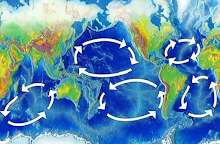Ocean gyres are large areas of the ocean characterized by circular currents. These currents create an upwelling system where nutrient-rich water from the ocean's depths is brought to the surface. Such nutrient enrichment can lead to increased primary productivity, which is the growth of algae and other plants. This, in turn, can support more marine life.
Nutrients that improve marine life
The nutrients that most often limit primary productivity in the oceanhttps://www.noaa.gov/ are nitrogen and phosphorus. These nutrients are necessary for the growth of algae and other plants that are the backbone of the marine food web.
In ocean gyres, nutrient enrichment can occur from various sources, including:
Upwelling: As mentioned above, upwelling brings nutrient-rich water from the ocean depths to the surface. This can lead to blooms of algae and other plants that can support more marine life.
Runoff from land: Runoff from land can transport nutrients to the ocean, which can also lead to increased primary productivity.
Atmospheric Deposition: Nutrients can also be deposited from the atmosphere into the ocean. It can be a significant source of nutrients in some regions, such as the North Atlantic.
Marine life that benefits from nutrient enrichment
A diversity of marine life benefits from nutrient enrichment in ocean gyres. This includes:
Fish: Many species of fish, such as tuna, mackerel and sardines, rely on nutrient-rich water for food and reproduction.
Marine mammals: Marine mammals such as whales and dolphins also benefit from nutrient enrichment. These animals feed on fish and other marine fauna, which is supported by increased primary productivity.
Seabirds: Seabirds such as pelicans and albatrosses also benefit from nutrient enrichment. These animals feed on fish and other marine fauna, which is supported by increased primary productivity.
Conclusion
Nutrient enrichment can improve marine life in ocean gyres by increasing primary productivity. This can lead to an increase in fish, marine mammals, seabirds and other marine life.

Comments
Post a Comment